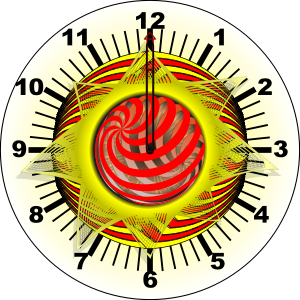A Matter Of Time
Even Time Has Rules To Follow
The Laws of Time
1: Every action that changes, affects, or causes transit through time creates a new parallel universe by the Many Worlds Interpretation of Quantum Mechanics.
Example: A ship that enters a wormhole emerges in a new, parallel universe created by its own transit across time.
2: A time traveler is free to act to interfere in events without fear of self-destruction, as his original self in his original universe remains safe, as his actions take place in a second universe created by the First Law when the traveler moves through time.
Example: A time traveler can break the early relationship between his parents safely because his parents are still together in his original reality.
3: Although a time traveler is allowed to interfere with events by the Second Law, the timeline of each parallel universe is consistent to itself.
Example: While the time traveler in the previous example is safe to break up his alternate parents, the nature of the First Law prohibits him from breaking up his original parents.
4: Though the Third Law states that timelines are self-consistent, infinite event loops can form as long as more than one universe is involved directly in the loop.
Example: A man finds a journal as a child that teaches him how to rule the world. Later, he transfers this information to a new journal, which winds up being the same journal he finds as a child. When the journal is temporally displaced, it enters a parallel universe and is found by the parallel man as a child. This forms a loop of universes while each individual universe remains self-consistent and paradox-free.
5: Even though time naturally appears to move in one direction, forward, cause does not always precede effect, and effect can change cause, as seen in the Polchinski Paradox. Effect nullifying cause is not inconsistent due to the Second Law.
Example: A man has a wormhole that goes one minute into the past. He stands in front of it for two minutes, and fires a bullet into the wormhole. The transit of the bullet creates a parallel universe and strikes a parallel version of the scientist. The scientist who fired the bullet does not die as he did not strike himself in his own reality.
6: Travel to observe or prevent an event can consistently trigger said event due to the fact that the event in now taking place in a new, different parallel universe that was created by the First Law when the transit took place. The original course of events still occurs in the universe of the traveler’s origin.
Example: A man goes back in time to observe the cause of a famous, unsolved arson case. While he is at the building, he knocks over a lamp and starts the fire. However, as he had traveled back in time, he arrived in a parallel universe, and thus the famous fire remains a mystery to him, at least in the sense of the fire that happens in his original universe.
7: All events are intertwined, so to change one event will in some way, shape, or form affect every event.
Example: You give a flower to someone at school. This brightens their day and puts them in a better mood. They cease bullying an unpopular student at school. This child’s emotional pain stops, and he does not grow up to feel alone and afraid of others. In the original course of events, without the flower, the bullied student grew up to be a dictator.
8: Due to the infinitely many possible events that each have their own unique timeline and their own unique parallel universe by the First Law, all possible events do happen, and all possible outcomes of an event are equally real.
Example: In a parallel universe where the Axis Powers were given the secret to nuclear weapons by a time traveler, the Axis Powers won World War II, although this differs from our perceived course of events, they are no less or more real than our current perception of how events unfolded in World War II.












